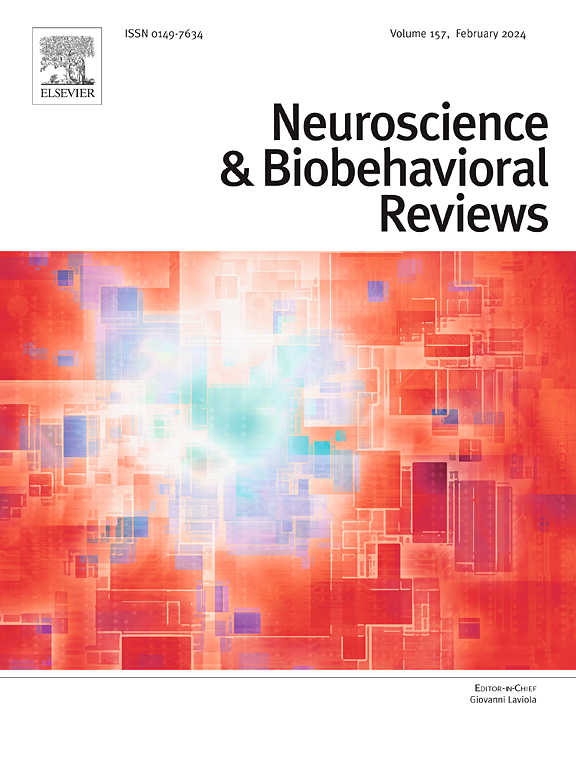Therapeutic potential of non-invasive brain stimulation in alleviating suicidal ideation and depressive symptoms in major depressive disorder: A systematic review and meta-analysis
IF 7.9
1区 医学
Q1 BEHAVIORAL SCIENCES
引用次数: 0
Abstract
Importance
Suicidal ideation, intricately associated with depressive symptoms, poses a significant public health challenge. Previous clinical studies of non-invasive brain stimulation (NIBS) as a therapeutic modality have demonstrated encouraging efficacy, underscoring its potential to address both suicidal and depressive manifestations.
Objective
The present study aims to integrate the anti-suicidal and antidepressant effects of NIBS in depressive patients and examined the complex interplay and underlying correlations between these effects.
Methods
Adopting the PICOS framework and adhering to PRISMA guidelines, we conducted a comprehensive systematic review and meta-analysis, prospectively registered with PROSPERO (CRD42024506889). Our search, spanning six databases from inception to June 2025, targeted terms related to suicidal ideation, depression, and NIBS, with a focus on randomized controlled trials. Following independent screening by two assessors, we assessed the methodological rigor of the included studies using the Jadad score and the Cochrane Collaboration Risk of Bias Tool version 2 (RoB2).
Findings
The meta-analysis included 21 clinical trials from 19 articles (with two articles each reporting two trials), totaling 1329 participants. Results revealed a small effect size for the anti-suicide effect (SMD = −0.28, 95 % CI [−0.43, −0.14], I2 = 38.8 %, p < 0.001) and a medium effect size for the antidepressant effect (SMD = −0.46, 95 % CI [−0.64, −0.28], I2 = 22.9 %, p < 0.001). Subgroup analysis and meta-regression highlighted cultural background (Western or Non-western) as the most significant contributor to the heterogeneity of suicidal outcomes (R2 = 100 %). Furthermore, a positive linear correlation was observed between the two therapeutic effects (R = 0.74, p < 0.001), suggesting a synergistic interplay.
Interpretation
Our findings emphasized the dual therapeutic potential of NIBS in mitigating suicidality and depression, offering outcome-driven evidence for clinical practice and mathematical correlation into the underlying neurobiological mechanisms. Notably, the heterogeneity analysis revealed the profound influence of sociodemographic factors, particularly cultural context, on psychological states, indicating the need for culturally tailored interventions.
非侵入性脑刺激在减轻重度抑郁症患者自杀意念和抑郁症状方面的治疗潜力:一项系统综述和荟萃分析
自杀意念与抑郁症状错综复杂地联系在一起,构成了一个重大的公共卫生挑战。以往的临床研究表明,非侵入性脑刺激(NIBS)作为一种治疗方式具有令人鼓舞的疗效,强调了其解决自杀和抑郁表现的潜力。目的整合NIBS对抑郁症患者的抗自杀和抗抑郁作用,并探讨这些作用之间复杂的相互作用和潜在的相关性。方法采用PICOS框架并遵循PRISMA指南,我们进行了全面的系统评价和荟萃分析,并在PROSPERO前瞻性注册(CRD42024506889)。我们的搜索跨越六个数据库,从成立到2025年6月,目标是与自杀意念、抑郁症和NIBS相关的术语,重点是随机对照试验。经过两位评估者的独立筛选,我们使用Jadad评分和Cochrane协作风险偏倚工具版本2 (RoB2)评估纳入研究的方法学严谨性。荟萃分析包括来自19篇文章的21项临床试验(每篇文章报道两项试验),共计1329名参与者。结果显示,抗自杀效果的效应量较小(SMD = - 0.28, 95 % CI [- 0.43, - 0.14], I2 = 38.8 %,p <; 0.001),抗抑郁效果的效应量中等(SMD = - 0.46, 95 % CI [- 0.64, - 0.28], I2 = 22.9 %,p <; 0.001)。亚组分析和元回归强调,文化背景(西方或非西方)是自杀结果异质性的最重要因素(R2 = 100 %)。此外,两种治疗效果之间存在正线性相关(R = 0.74, p <; 0.001),表明两者之间存在协同作用。我们的研究结果强调了NIBS在减轻自杀和抑郁方面的双重治疗潜力,为临床实践提供了结果驱动的证据,并为潜在的神经生物学机制提供了数学相关性。值得注意的是,异质性分析揭示了社会人口因素,特别是文化背景对心理状态的深刻影响,表明需要针对不同文化进行干预。
本文章由计算机程序翻译,如有差异,请以英文原文为准。
求助全文
约1分钟内获得全文
求助全文
来源期刊
CiteScore
14.20
自引率
3.70%
发文量
466
审稿时长
6 months
期刊介绍:
The official journal of the International Behavioral Neuroscience Society publishes original and significant review articles that explore the intersection between neuroscience and the study of psychological processes and behavior. The journal also welcomes articles that primarily focus on psychological processes and behavior, as long as they have relevance to one or more areas of neuroscience.

 求助内容:
求助内容: 应助结果提醒方式:
应助结果提醒方式:


